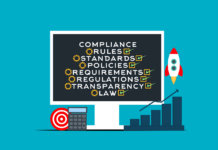Occupational burnout is one of the major problems that many people face in their careers. It is important to identify and research the problem for several reasons.
First of all, it is important to aim to prevent the mental health problems of employees in an organization – understanding the need for a set of actions that would help to avoid professional burnout by employees.
Secondly, the allocation of available mental health care resources is beginning to be used more effectively. This would save organizations the means that could lose money in the form of hospital employees who have fallen victim to occupational burnout.
Why is the prevention of burnout important?
In my experience as a community manager for a custom software development company, it is first and foremost important to value and protect mental health in the context of the organization. In particular, taking timely measures to protect the mental health of its employees.
What do we know about Burnout?
The problem of Burnout has been studied by many scientists. The term “professional burnout” was first mentioned in 1974, by the American psychiatrist and psychologist Herbert Freudenberger, who defines Burnout as a condition characteristic of mentally healthy people. It is recognizable for symptoms of physical and mental exhaustion – headache, insomnia, a tendency to depressive and aggressive states.
Kristina Maslach identifies 6 areas of workplace issues that can lead to Burnout:
- Requirements that exceed the employee’s real capabilities
- Lack of independence in work and unnecessary degree of control applied
- Lack of appreciation towards efforts and contributions at work
- Lack Of positive relations with the work team
- Lack of fair working relationships
- The drastic difference between ethical principles and job requirements
How to recognize Burnout?

On an individual level, some of the symptoms may be:
- Emotional – depressor rapidly changing mood, emotional exhaustion, increased anxiety and tension.
- Cognitive – helplessness (loss of meaning and hope), feeling powerless, feeling dissatisfied, low self-esteem, guilt, lack of concentration. Negative (pessimistic) attitude, labeling others in a deprecating way.
- Physically – chronic fatigue, headache, sleep disturbance, musculoskeletal pain.
- Behavioral – hyperactivity, impulsivity, increased level of complaints related to work, decreased pace and efficiency of work, an increase of interruptions and absences from work, aggressiveness, conflict, isolation. A tendency to aggressive behavior, interpersonal conflicts, social exclusion
- Motivational – disappointment, loss of idealism, humility, boredom, indifference
Initial understanding of the problem, in an attempt to prevent it, is the first step. The symptoms of occupational burnout are very similar to those of depression but tied to the context of the organization. As well as the severe impact on the employee, they would also have a negative impact on the business.
Despite the common symptoms those of depression, it is important to note that occupational burnout syndrome is not classified as a medical condition according to the World Health Organization.
In my opinion, a question must be raised here: whether and how physical and emotional exhaustion due to the work environment can affect other aspects of human life.
Also Read: Devising A Few Gamification Strategies At Work
Causes for Burnout and how the company can prevent Burnout?
In order to deal with the problem of burnout, we need to isolate what company conditions predisposition a risk for fatigue.
In my opinion, it is important to note that these mental and physical changes can be triggered by the lack of established standards. Both with colleagues and management, as well as by flawed task management and unrealistic expectations that one cannot cope with. It starts with emotional fatigue, and then (but not necessarily) develops physical symptoms also occur. We could replace unsatisfactory practices with those that are productive while taking into account employee health.
| Don’t | Do |
| Take on an excessive amount of task | Correctly distribution between different departments and positions of duties, creating the feeling that the employee has someone to turn to for assistance. |
| Lack of set standards | Establishing principles for promoting good work, creating a sense of teamwork. |
| Employee fatigue (physical symptoms) | Allowing a sufficient number of breaks during working hours. Do not allow overtime to exceed what is required by law, and compensate it with higher pay or additional leave, if the company’s activity allows. |
If we look at them again in opposition, we can conclude that these problems also have their solutions:
Problem: Damaging the authority of others and creating interpersonal intrigues are the first signal of the so-called “toxic” people in the organization as well as a toxic work environment.
Solution: This type of behavior at the interpersonal level should be monitored and timely addressed. This prevents losses to the organization – employees or customers.
Problem: An employee’s aggressive behavior puts him or her in social isolation in the context of the organization.
Solution: Social isolation in the workplace further affects the condition of an employee suffering from professional burnout. The organization should keep an eye on this. Toxic behavior on the part of the individual has its causes and the organization must be able to understand them and act to improve the condition.
The low efficiency in the work of each employee always has its reasons. It is the responsibility of direct executives to oversee the fulfillment of the duties of their subordinates is very important here. If the direct manager does not look for the source of the behavior and the results that the employee shows, then the company has a serious deficit in attitude towards the employee.
Such companies are characterized by a focus on the smooth functioning of the business through the performance of tasks by each, but there is no focus on the individual development and condition of the particular employee.
Organizational culture

Organizations that can predispose their employees to Burnout unintentionally. More specifically, those whose organizational culture does not contain a value in teamwork and belonging.
The focus in these companies is not on employees, as a major driver of the company’s well-being. The symptoms of burnout, assessed individually, can be considered as a temporary state of the individual or even character traits.
In my opinion, it is important to monitor and isolate the causes of such behavior. Disregarding the symptoms impedes not only the personal growth of the particular employee but also the reputation of the company (especially in the case of senior positions that are in the public eye).
Potential to grow
The employee needs to know their position on the career path and where to go – what he needs to improve in his knowledge and skills, but also what are the strengths of his performance. When those are factors that are lacking in an organization or not communicated regularly with direct executives, this leads to exhaustion and a decrease in interest in the work.
The company, that promotes the development and mental health of its employees, contains elements of encouragement for teamwork and a clear career ladder. It is imperative not to skimp over defining the duties and responsibilities of each employee.
Knowing how far the employees’ decision-making capabilities extend, where to seek help and who to turn to is key for accomplishing the tasks as needed. Clearly defined company values that also stand behind their brand should also be a clearly communicated priority.
To sum up
In conclusion, I can say that the state of emotional burnout and the understanding of its characteristics is of the utmost importance for people to take action at the first signs and in a timely manner. The culture of an organization is crucial to the status and development of its employees. Communicating issues in a timely manner affect many different units within the company. Companies, in turn, need to stand behind their employees to nourish long-term partnership people.
In your opinion, what is the most important practice for an organization to support and protect its employees? Do you think company loyalty inspires loyalty in return?
Also Read: How You Can Keep Yourself Motivated In This Busy World?









